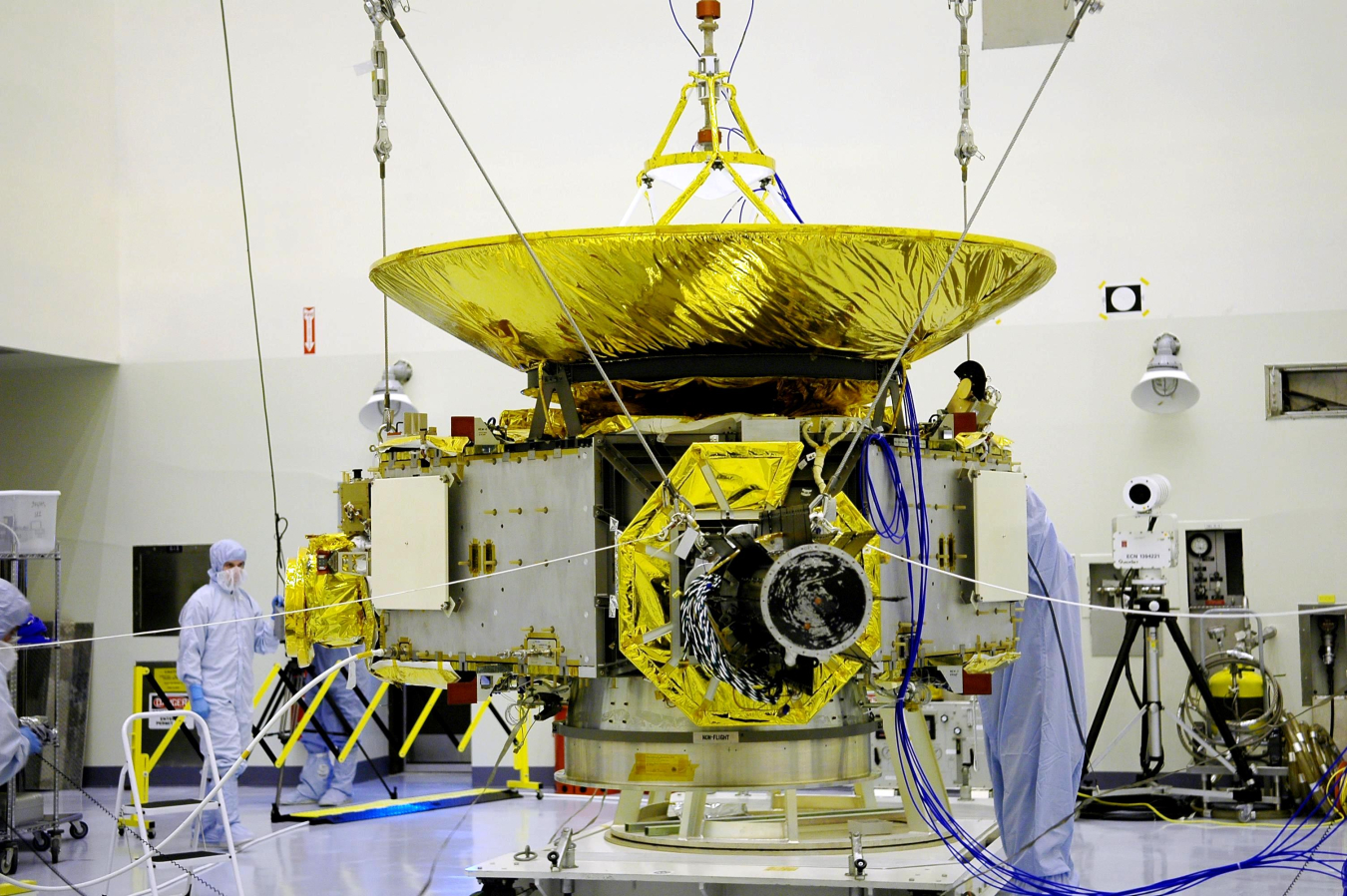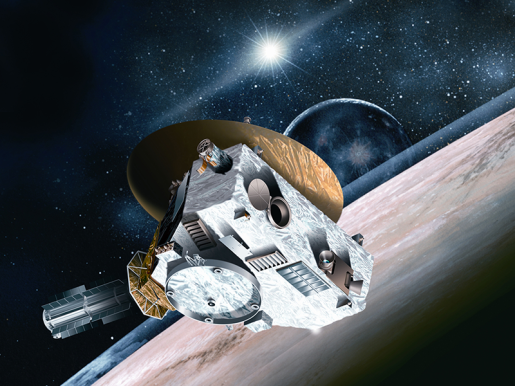NASA's New Horizons spacecraft is expected to reach Ultima Thule by New Year's Day.
December 27, 2018NASA’s New Horizons spacecraft is about to make history … again.
It’s approaching Ultima Thule—a Kuiper Belt object located more than 4 billion miles away from us, here on Earth.
The spacecraft is expected to reach its target in the early morning hours on New Year’s Day, making it the farthest planetary flyby ever in exploration history.
The pictures it sends back will give us our first detailed look at these mysterious icy bodies near the outer edges of the solar system.
It’s an incredible achievement, and one that wouldn’t be possible without nuclear energy.
Radioisotope Power Systems
New Horizons is equipped with a radioisotope power system (RPS) that was developed by the U.S. Department of Energy (DOE).

Assembly of the New Horizons spacecraft.
These systems are often referred to as “space batteries” and convert heat from the decay of plutonium-238 into electrical power.
They can last for decades without any maintenance and are perfect for missions where solar panels can’t supply adequate power.
To date, DOE has built 46 RPS units that have powered 27 U.S. space missions.
The materials and hardware are provided by Oak Ridge National Laboratory. The fuel pellets are then manufactured at Los Alamos National Laboratory before the final unit is assembled and tested at Idaho National Laboratory.
A Picture’s Worth a Thousand Words
New Horizons uses a radioisotope thermoelectric generator, or RTG.
This is a very rugged and reliable device that has kept the spacecraft running since its launch on January 19, 2006.
The RTG provides about 200 Watts of electricity and easily powered New Horizons through the first part of its mission—a historic flyby of Pluto that took nearly 9½ years to complete.
Because of this technology, we now have these stunning photos, which is a far cry of what we had before the flyby on July 14, 2015.
What’s Ahead?
According to NASA, New Horizons is on track to fly by Ultima Thule at 12:33 a.m. EST on New Year’s Day. It will approach the object three times closer than Pluto and is expected to provide even more detailed photos and data sets than before.
The object is located more than 4 billion miles away from the sun and it will take radio signals from the spacecraft about 6 hours, at light speed, to reach mission headquarters in Laurel, Maryland.
Stay tuned …
Related Content
Learn more about RTGs with this awesome video by NASA.
Tracey Bishop
As the deputy assistant secretary for Nuclear Infrastructure Programs, Ms. Tracey Bishop is responsible for the management of the Office of Nuclear Energy’s infrastructure programs. This includes NE’s field operations at the Nuclear Energy Oak Ridge Site Office, supporting the lease administration of uranium enrichment capabilities at Oak Ridge Reservation and the Portsmouth Gaseous Diffusion Plant.
In this capacity, Ms. Bishop is responsible for a large portfolio of infrastructure programs, spanning facility management, capital asset planning and construction, safeguards and security, emergency planning, and nuclear materials management. These programs and capabilities enable critical nuclear energy research and development activities by providing and maintaining safe, secure, and compliant facilities for multiple customers within and external to the Department of Energy. She is also responsible for delivering compact, safe radioisotope power systems, heater units, and related technologies to support the National Aeronautics and Space Administration and other agencies in space exploration and national security missions.
Ms. Bishop has more than 25 years of experience in facility management and environmental, safety and health oversight experience with DOE. Before joining NE in 2008, Ms. Bishop served as the acting director of the Office of Facilities Operations, Office of Defense Programs, National Nuclear Security Administration. In this capacity, Ms. Bishop managed a multisite facility operations program that supported the Stockpile Stewardship Program and other national security missions at Kansas City Plant, Pantex Plant, Savannah River Tritium Facilities, Y-12 National Security Complex, Los Alamos National Laboratory, Lawrence Livermore National Laboratory, Sandia National Laboratories, and Nevada National Security Site.
Ms. Bishop holds a bachelor's degree in nuclear engineering from the Georgia Institute of Technology and a master's in business administration from the University of Maryland. She is certified as a project management professional with the Project Management Institute.






